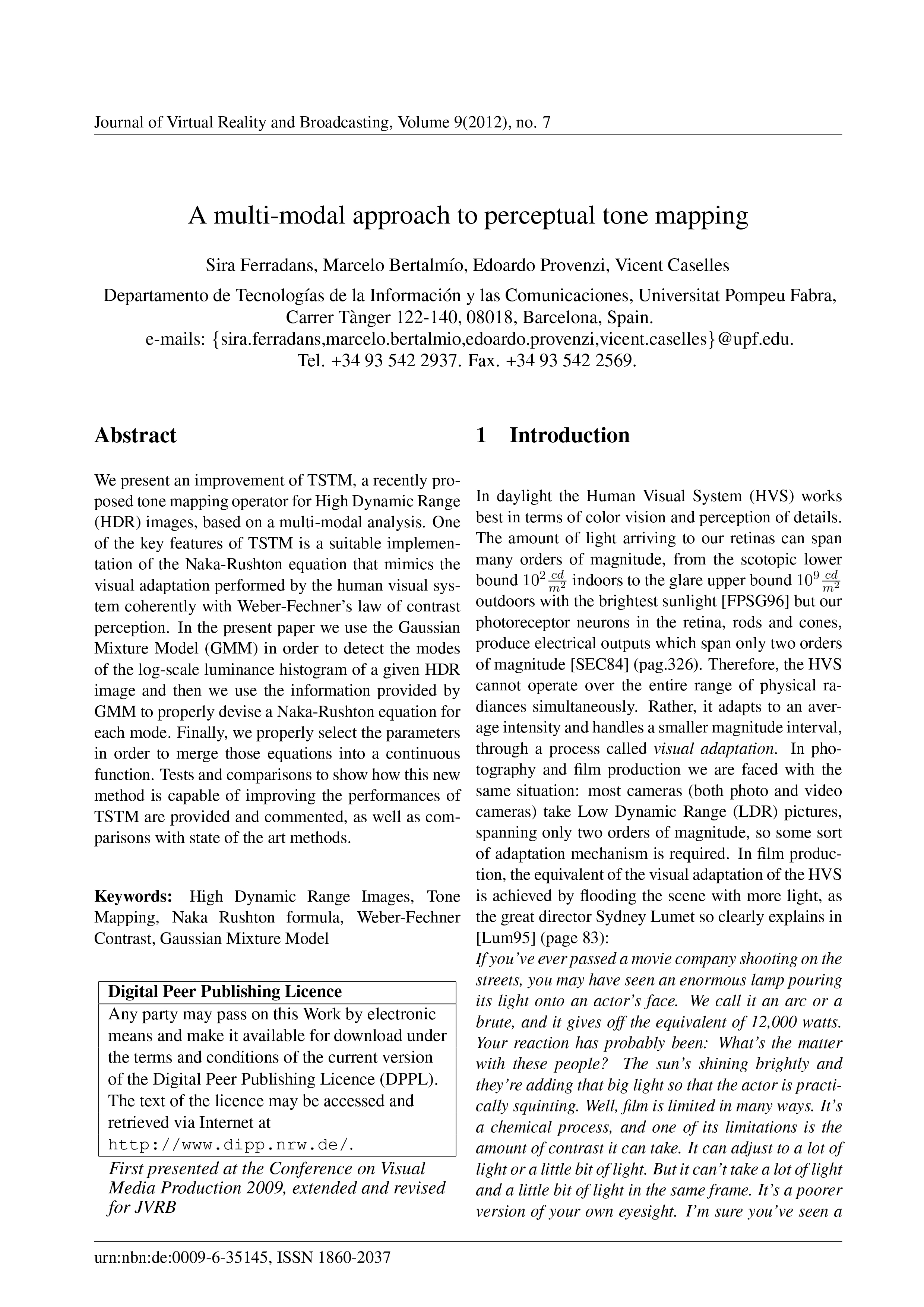A multi-modal approach to perceptual tone mapping
DOI:
https://doi.org/10.20385/1860-2037/9.2012.7Keywords:
Gaussian Mixture Model, High Dynamic Range Images, Naka Rushton Formula, Tone Mapping, Weber-Fechner ContrastAbstract
We present an improvement of TSTM, a recently proposed tone mapping operator for High Dynamic Range (HDR) images, based on a multi-modal analysis. One of the key features of TSTM is a suitable implementation of the Naka-Rushton equation that mimics the visual adaptation performed by the human visual system coherently with Weber-Fechner's law of contrast perception. In the present paper we use the Gaussian Mixture Model (GMM) in order to detect the modes of the log-scale luminance histogram of a given HDR image and then we use the information provided by GMM to properly devise a Naka-Rushton equation for each mode. Finally, we properly select the parameters in order to merge those equations into a continuous function. Tests and comparisons to show how this new method is capable of improving the performances of TSTM are provided and commented, as well as comparisons with state of the art methods.
Published
2013-06-27
Issue
Section
CVMP 2009





